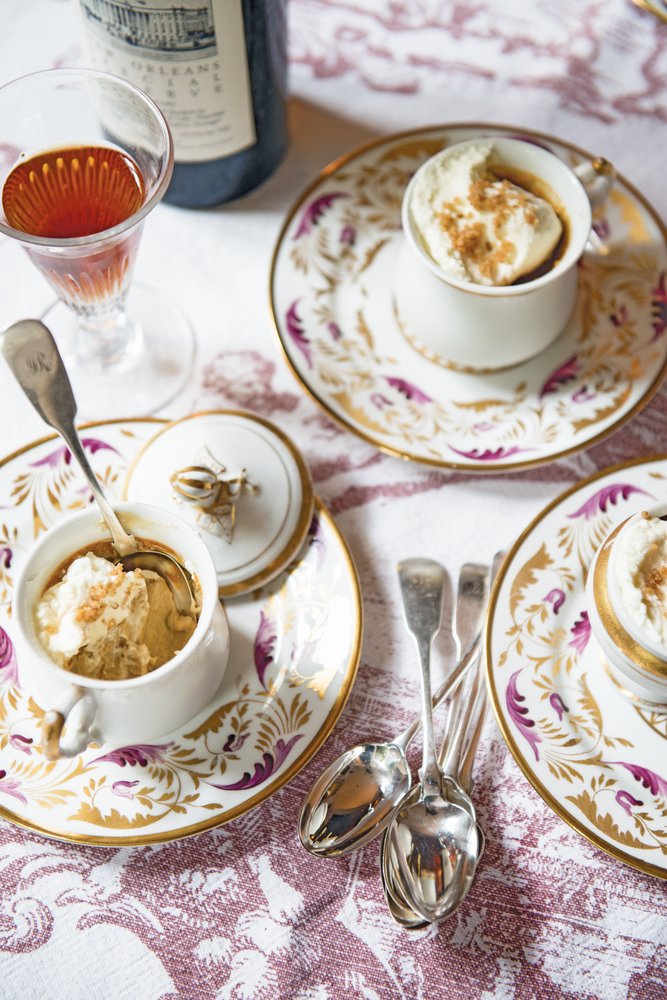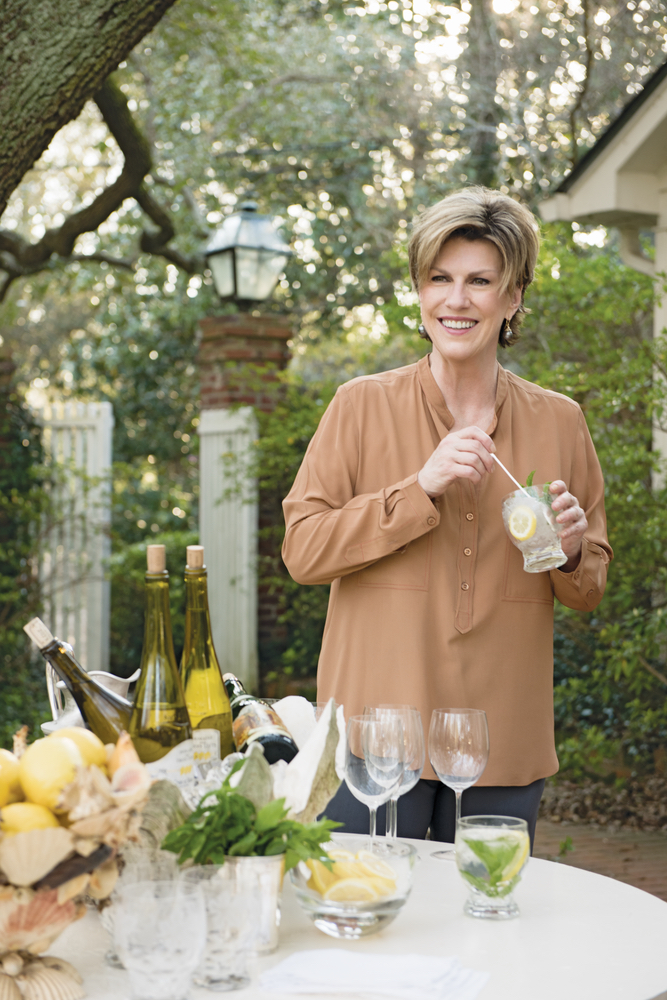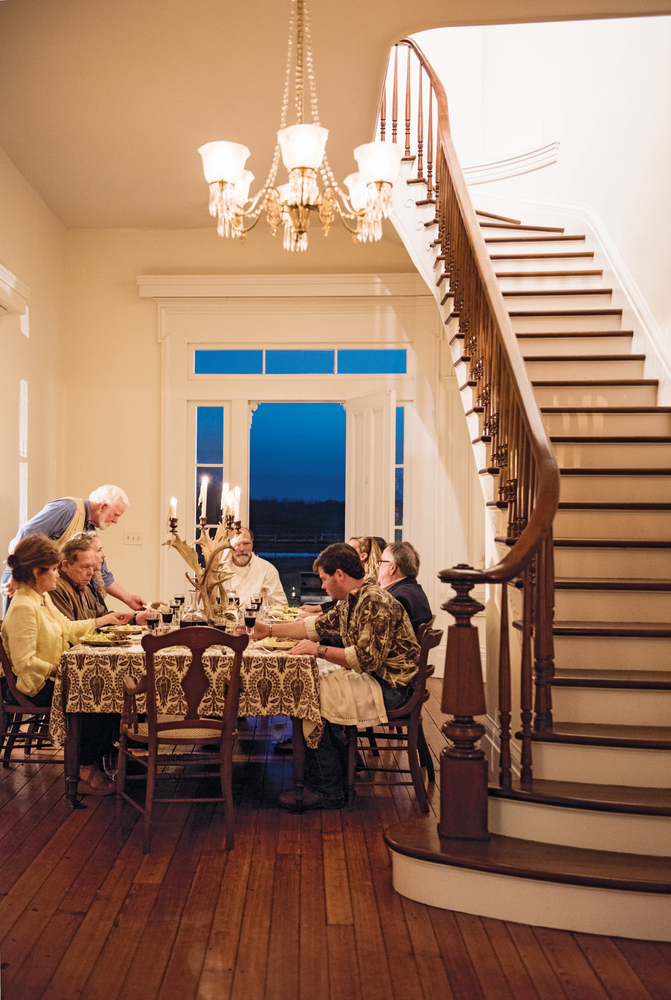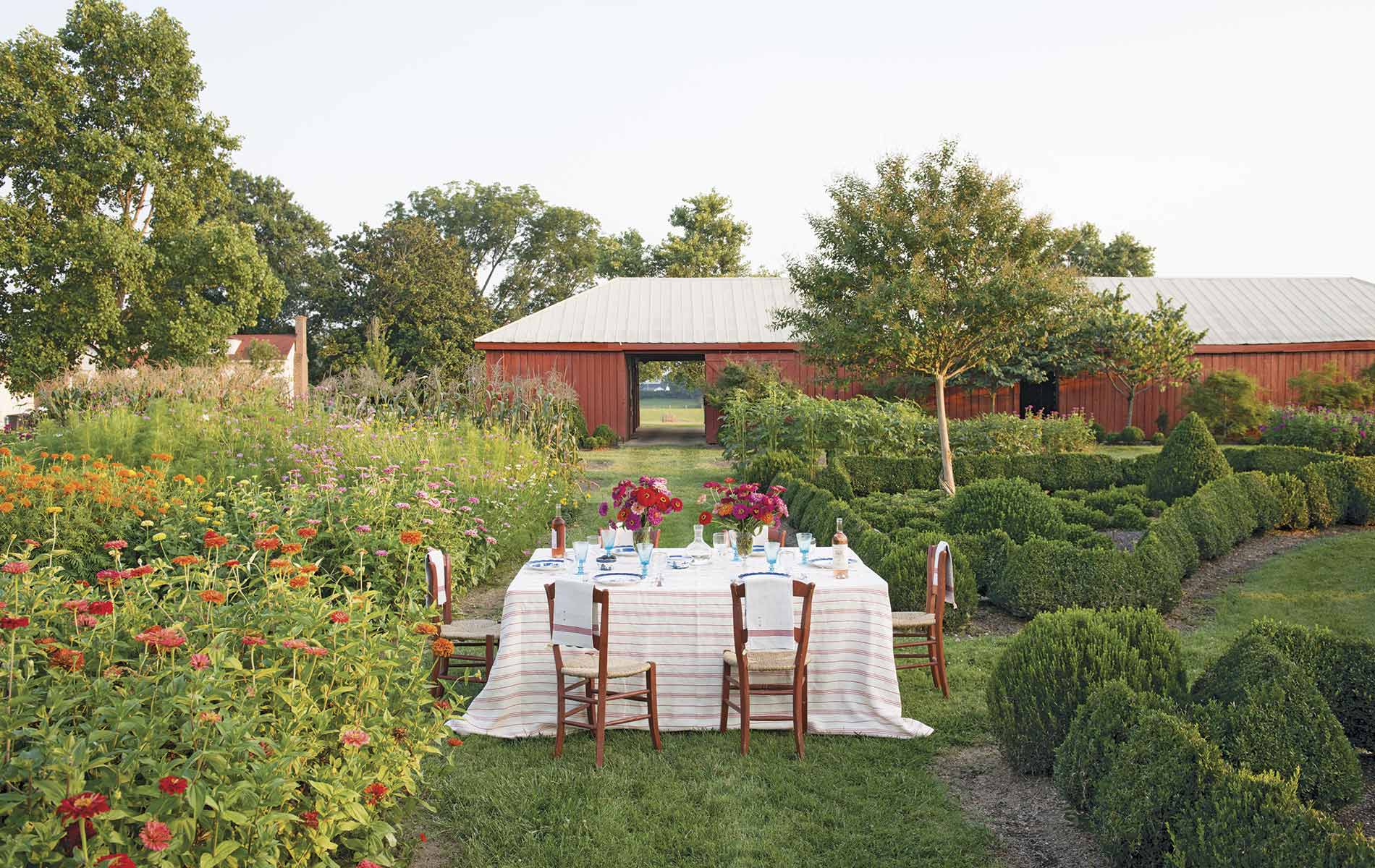
vie-magazine-julia-reed-hero
At Home in the South
By Julia Reed | Photography by Paul Costello
Early on in the process of putting together my latest book, Julia Reed’s South: Spirited Entertaining and High Style Fun All Year Long, one of the titles under consideration was Julia Reed: At Home in the South. Ultimately, everyone decided it wasn’t precise enough—the book is a cookbook, after all, and its chapters are centered around eleven different parties. But the At Home title did make a certain amount of sense, at least to me. For one thing, my ambition was for the book to be as much about living as entertaining. For another, all the parties took place at either my actual homes or my spiritual ones.
When I was growing up in the Mississippi Delta, entertaining always meant “at home.” Our town boasts a handful of restaurants, including the legendary Doe’s Eat Place, but parties, whether a small dinner or a big dance, were held at the house of the host and/or hostess. When I went to college in Washington, D.C., where I also held a job at Newsweek, the trend was much the same. The town was possessed of legendary hostesses—including Susan Mary Alsop, Evangeline Bruce, and Katharine Graham—whose dinner parties in their beautifully appointed dining rooms honestly facilitated much of the work of government. I was lucky enough to be the occasional token “young thing” at Susan Mary’s table (she was all about mixing) and was dumbstruck the first time I watched members of Reagan’s cabinet mingle with senators from both sides of the aisle, influential columnists, agency chiefs, and august “wise men” (and women). Guests talked and ate and drank together and things actually got done.
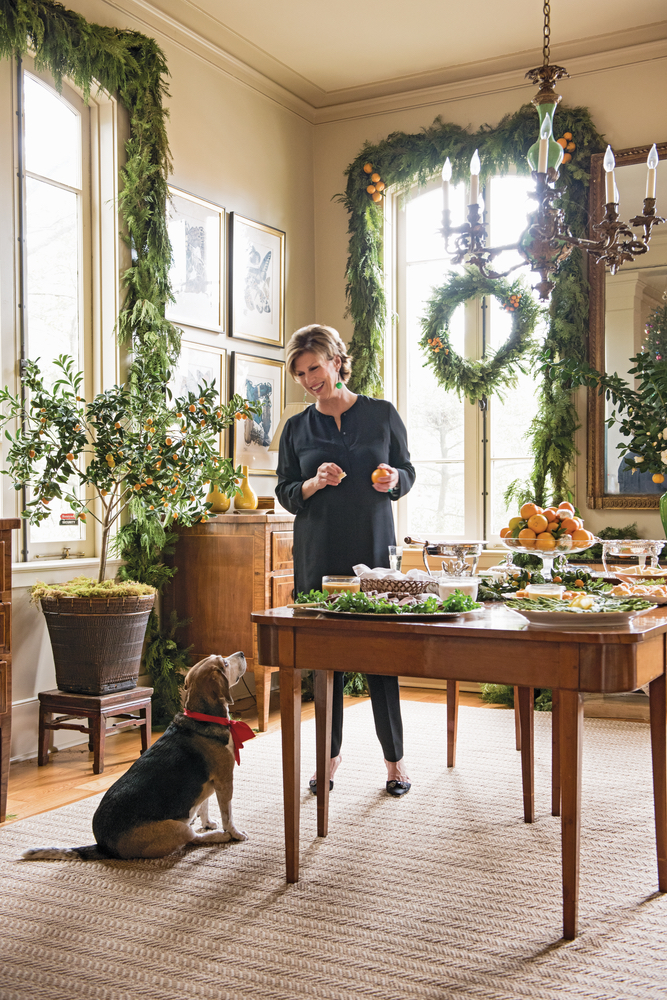
[the_blockquote]It was this remarkable creative energy and expansive approach to entertaining that so inspires me to this day. I realize now that the two women were entertaining themselves as much as their guests.[/the_blockquote]
My own entertaining career began in this era, though on a far, far less grand scale. My tiny apartment off Dupont Circle featured a kitchen with no counters. I’d sit on the floor and push sauce for chicken curry through a wire mesh strainer; I discovered the cookbooks that are still my bibles (Lee Bailey’s Country Weekends, Chez Panisse Menu Cookbook, and everything by Marcella Hazan). Despite the famous dig that Washington is a town of “Northern charm and Southern efficiency,” Washington in those days still had the feel of a Southern city. But, in my midtwenties, when I moved to New York, I was amazed to discover that I was one of the few people I knew who entertained regularly at home (even in my first Midtown apartment, where once again, the minuscule kitchen forced me to use my Plexiglas coffee table as a work space). On those occasions, I drew—a lot—on the menus of my mother and her dear friend and almost constant entertaining partner, Anne Ross McGee, better known as Bossy, and I could think of no better role models.
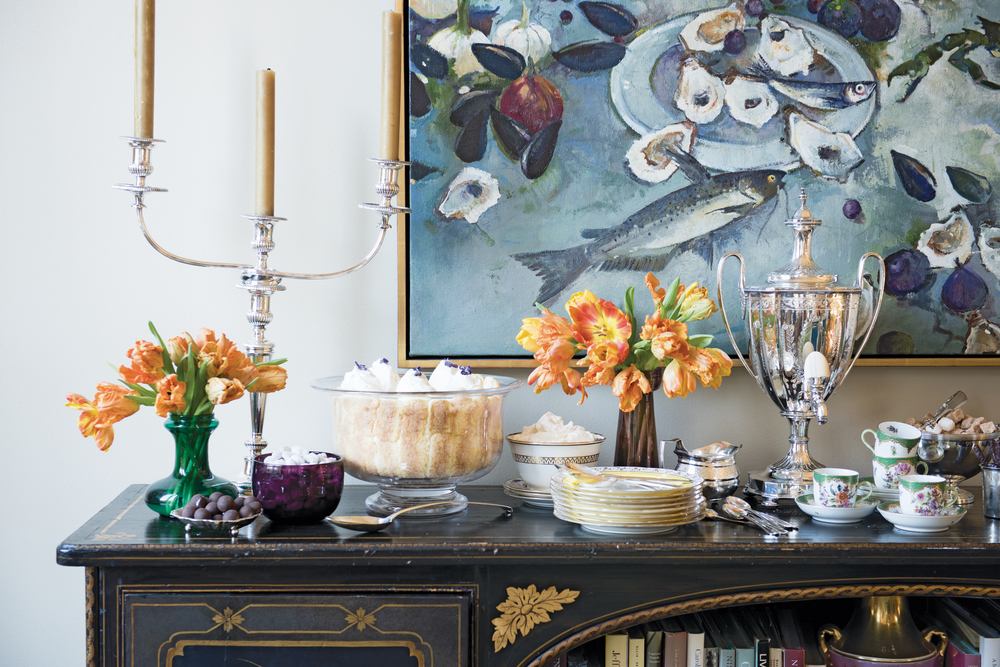
Christmas Eve was always celebrated at a big bash at the home of Bossy and her husband, Burrell McGee, while our house was the locale for a slightly more intimate Christmas night shindig (the children were allowed to get in on the act too, with champagne flutes of sparkling Catawba juice and roman candles set off on the lawn). Bossy and my mother threw countless rehearsal dinners, which in the Delta are almost always given by friends of the bride’s family—it’s not an easy place for out-of-town parents of the groom to just drop in and rent a hall. They thought nothing of cooking chicken Kiev for a hundred people, of hosting an impromptu Mexican-themed wedding reception for Bossy’s niece in our backyard. Our childhood birthday parties featured pony rides, banjo players, piñatas, and puppet shows. When the McGee sisters and I were barely eight, our mothers gave a formal Easter dinner for us and our equally young friends. I have a photo of us all dressed up in pretty batiste and lace dresses, complete with matching Mary Janes, and the boys in proper shorts suits and white oxfords seated at a round table on our terrace. Bossy and Mama had spent days making ombré pastel votive candles by dripping varying shades of wax into blown-out eggshells, and doing the same thing with melted Hershey’s chocolate to adorn our dessert plates.
It was this remarkable creative energy and expansive approach to entertaining that so inspires me to this day. I realize now that the two women were entertaining themselves as much as their guests—I remember them in one kitchen or the other, yacking away, flattening and rolling dozens of chicken breasts or painstakingly dripping that wax into eggshells. It was as fun for them to create a magical table for us as it was to do the same for decidedly more exalted guests. Once, when my father announced that the columnist and author William F. Buckley Jr. was coming to town with his wife, Pat, herself a formidable Manhattan hostess, our house was in the midst of being renovated. No problem—it was decreed that the dinner would be held outside. They had only three days to scour area antique and junk shops for four or five round wicker dining tables and chairs, which they painted white, while sage-green cotton duck was staple-gunned to the cushions. One of the guests brought his vibraphone and by the end of the evening, Buckley had taken over the upright piano and Bossy’s gorgeous niece, Charlotte, was dancing on a table. When Pat Buckley got back to New York, she wrote my mother to ask for the recipe for the scalloped oysters featured on the menu.
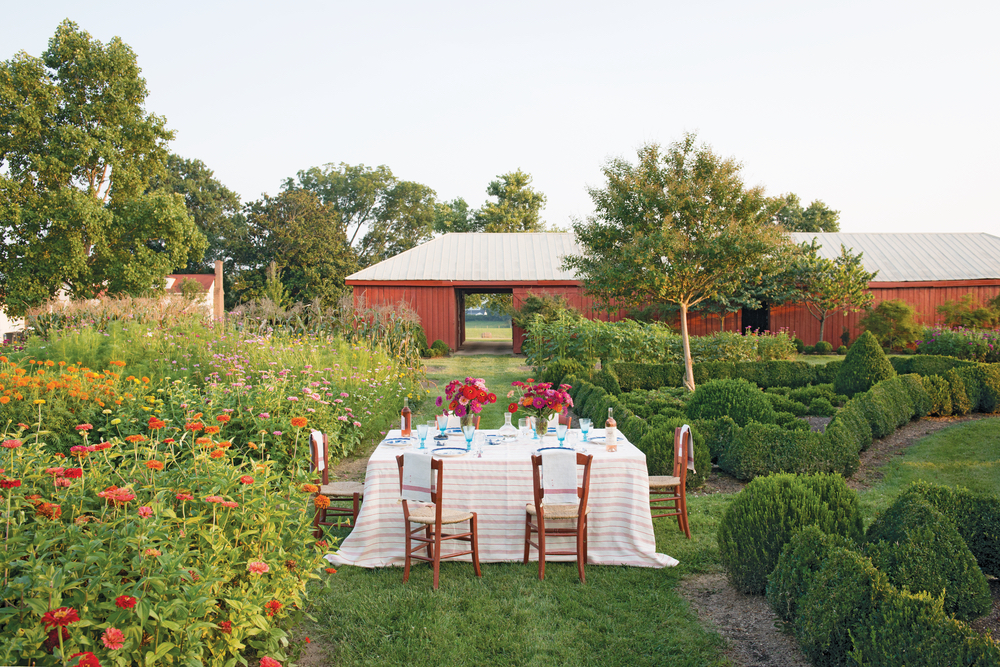
Thus was born the “V.D. Dinner,” staged again for various “Visiting Dignitaries,” as Anne Ross christened them. But as I hope the parties in my book illustrate, I also learned early on that you don’t need a famous guest to justify getting out the “good” china and silver and taking to the stove. All you really need is the desire to have some fun. When I look back at the parties of my childhood—as well as at the gatherings featured in Julia Reed’s South—I am reminded of the famous column Diana Vreeland penned for Harper’s Bazaar, called Why Don’t You? Vreeland’s question was usually finished off with something typically extravagant and over-the-top, as in, “Why don’t you rinse your blond child’s hair in dead champagne to keep it gold, as they do in France?” I like to think my suggestions are slightly less extravagant but equally exuberant. I mean, why not celebrate everyone’s favorite summer bounty by hosting a six-course tomato dinner (dubbed “Tomatopalooza” in the book) outside and pairing each course with a yummy (and, incidentally, color-coordinated) rosé? Why not stage an elaborate picnic on a sandbar in the middle of the Mississippi? That’s what boats are for, after all! Why not celebrate my pal Jon Meacham’s best-selling book on Thomas Jefferson with a dinner inspired by the man himself? After all, our third president was the original farm-to-table host. Perhaps most important, why are you waiting to use your wedding china, your grandmother’s silver, your best wine glasses, and your monogrammed linens? I contend that Southerners have always been adept at using all our best “stuff.”
[the_blockquote]I also learned early on that you don’t need a famous guest to justify getting out the “good” china and silver and taking to the stove. All you really need is the desire to have some fun.[/the_blockquote]
The Jefferson dinner took place in my own library. Tomatopalooza was held at the weekend home, called Brookside, of my good friends Libby and Ben Page, an hour or so outside Nashville, where they reside during the week. I’ve known Libby all my life; Ben designed my former garden in New Orleans. Brookside’s stunning garden stretches out behind a picturesque red barn and features formal parterres planted with zinnias and day lilies, eggplant and squash, corn and at least a dozen varieties of tomatoes. We set up our summer table out there, but more often guests gather around the large round table in the dining room. The edge of the table, made by a local craftsman, is inlaid with all things grown at Brookside over the years: a cotton boll, a dogwood blossom, an ear of corn, and so on. They entertain at Brookside because, as in the Delta, there is little other choice—but also because it gives them such tangible pleasure. Much of the menu comes from either the garden or the pantry—Libby is a terrific cook and an inveterate preserver. Pork, beef, and chickens come from nearby farmers.
[the_blockquote]We ate on fine family china, drank copious bottles of leftover rosé, and didn’t get up from that beautiful inlaid table until well after midnight. It was too much fun to sit—at home—and eat and drink and laugh and celebrate life.[/the_blockquote]It was such fun to watch Libby and Ben bring Brookside into its current, glorious state. It was a big day when Ben hung the dining room curtains at last, and covered the last empty wall space with an enormous—and gorgeous—black-and-white photograph taken by our great mutual friend Jack Spencer. The photo is a close-up of a magnolia blossom, much like those on the trees just outside. The seamless connections between landscaping, decorating, living, cooking, and entertaining are what make a stay at Brookside so utterly special and what I’ve always loved most about living in the South. One of the best meals of my life was eaten the night after we shot the cover of Julia Reed’s South in front of the red barn. Libby made us all the best BLTs ever with some of her corn relish and bread-and-butter pickles on the side. We ate on fine family china, drank copious bottles of leftover rosé, and didn’t get up from that beautiful inlaid table until well after midnight. It was too much fun to sit—at home—and eat and drink and laugh and celebrate life.
— V —
About the Author
Journalist and author Julia Reed is a contributing editor at Garden & Gun and Elle Decor. She writes a column for Southern Living, contributes to the Wall Street Journal, and is the author of five books, including But Mama Always Put Vodka in Her Sangria! and One Man’s Folly: The Exceptional Houses of Furlow Gatewood.
Share This Story!
KEEP UP WITH THE LATEST STORIES FROM VIE



